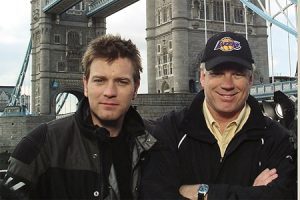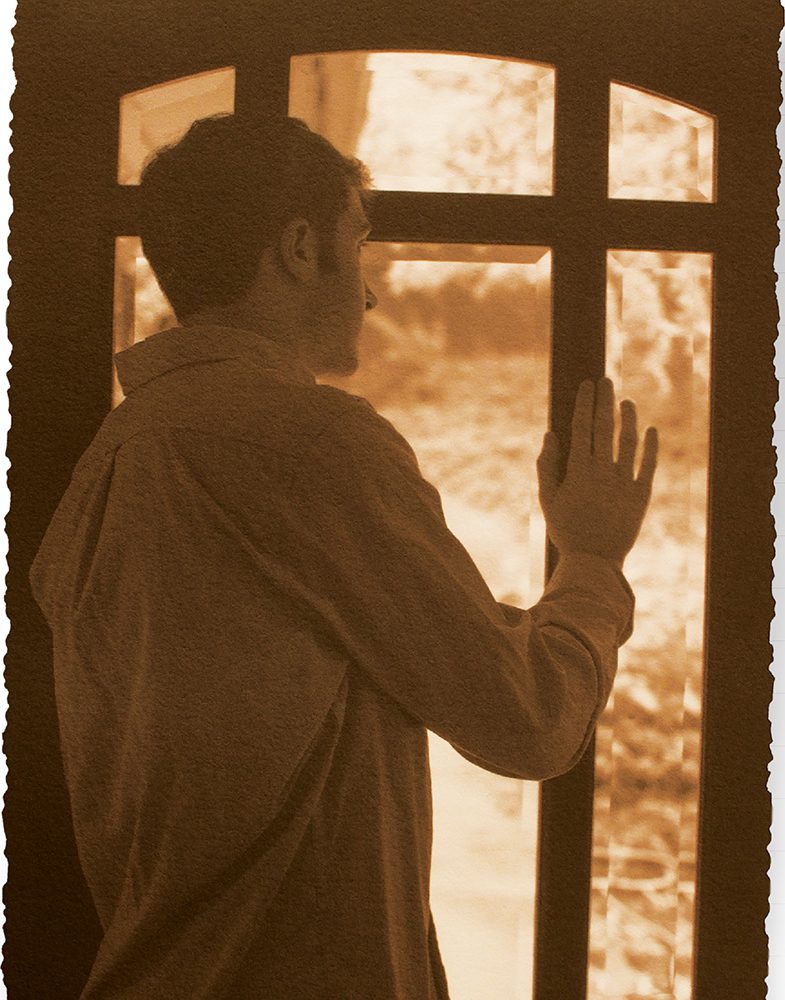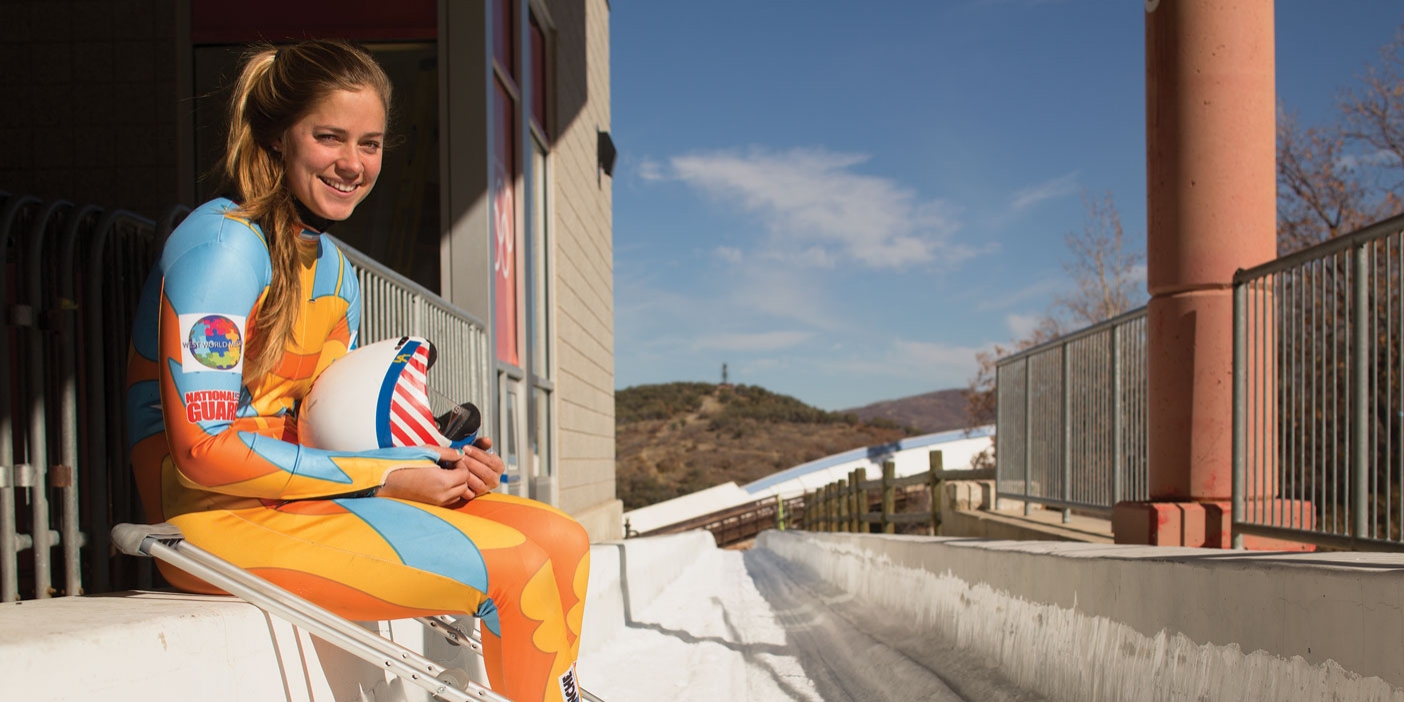
In his career as a television director and producer, Bill Elliott (right)–posing here with actor Ewan McGregor–has traveled the world and conducted more than 2,000 interviews for television.
When A. William “Bill” Elliott Jr. (BA ’82) shot footage around campus for his high school audiovisual class and combined it with Carole King’s You’ve Got a Friend, he realized that this was a way to tell a story. He later received additional hands-on experience as a student at BYU, where he studied production and directing and landed an internship with CNN in Washington, D.C.
One CNN assignment took him to the White House to assist a camera operator. “I was given a CNN identification badge with no name and told to go to the West Wing,” Elliott recalls. After hours of shooting footage, he was instructed to be at the Oval Office. “I came into the room and noticed several secret service personnel,” he says. “I soon realized I was a few feet from President Reagan.”
After graduation, Elliott spent a few years doing corporate work before being hired by NBC, where he has directed and produced several television shows and interviewed more than 2,000 people.
One of his favorite interviews was with Bob Hope for an NBC special in the mid-1990s. “He was funny and friendly,” Elliott remembers. “During some down time he told me Walt Disney had contacted him in the 1950s to see if he wanted to invest in an amusement park he was building in Anaheim. Bob said there wasn’t anything down there but orange groves and passed on the offer.”
While working with stars is glamorous, creating a show requires a lot of hard work. For example, he recently directed a program giving viewers a sneak peek at new fall shows. “We amassed about 15 hours of material and needed to whittle it to just 24 minutes,” he says. “Doing this took a month and many late nights with bad pizza.”
Still, he says, there have been many high points. One of his most memorable experiences happened in Hungary. “We were filming Dostoyevsky’s Crime and Punishment in Budapest with the landmark Matthias Church in the background,” he says. “The sun broke through the clouds and hit the church’s towers. Our director called out, ‘The Great Gaffer in the sky has given us our lighting—let’s roll.’ It was one of those moments you felt transformed in time.”









